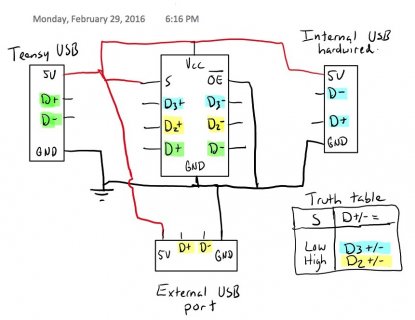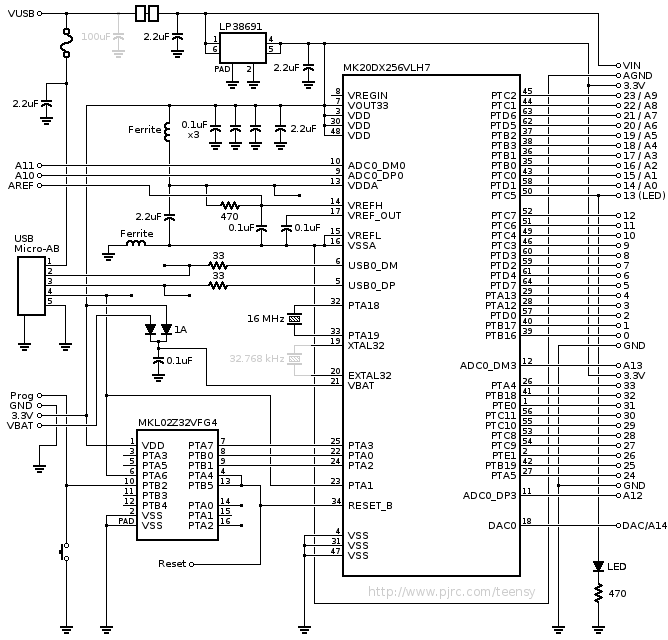Hey guys. I have a question that I’m hoping will be easy for someone to answer. I’ve been coming to this forum for the past couple years every time I have a teensy related issue but this is the first time I’ve felt the need to post something myself.
I need to integrate a teensy into a custom computer project so the computer will have device access to the teensy and also be able to reprogram it. Once its built into the box access to it will be difficult so I’ll be connecting external push button switches for reset and boot loader access (incase theres a problem with the software loading a sketch automatically). In addition to this I’ll need to be able to disconnect it from the computers USB to allow external access to the teensy via a seperate USB port build into the case of the project.
My idea was to wire a 4PDT switch to switch between the internal computers USB access to the teensy (D+/-, 5v, GND )and a separate USB port that will be build into the outside of the case. Power would be supplied from the computer when its attached internally via usb and then it will be powered by whatever device its connected to externally when I switch to the external USB port.
Is there a better way of doing this? Thank you.
I need to integrate a teensy into a custom computer project so the computer will have device access to the teensy and also be able to reprogram it. Once its built into the box access to it will be difficult so I’ll be connecting external push button switches for reset and boot loader access (incase theres a problem with the software loading a sketch automatically). In addition to this I’ll need to be able to disconnect it from the computers USB to allow external access to the teensy via a seperate USB port build into the case of the project.
My idea was to wire a 4PDT switch to switch between the internal computers USB access to the teensy (D+/-, 5v, GND )and a separate USB port that will be build into the outside of the case. Power would be supplied from the computer when its attached internally via usb and then it will be powered by whatever device its connected to externally when I switch to the external USB port.
Is there a better way of doing this? Thank you.



